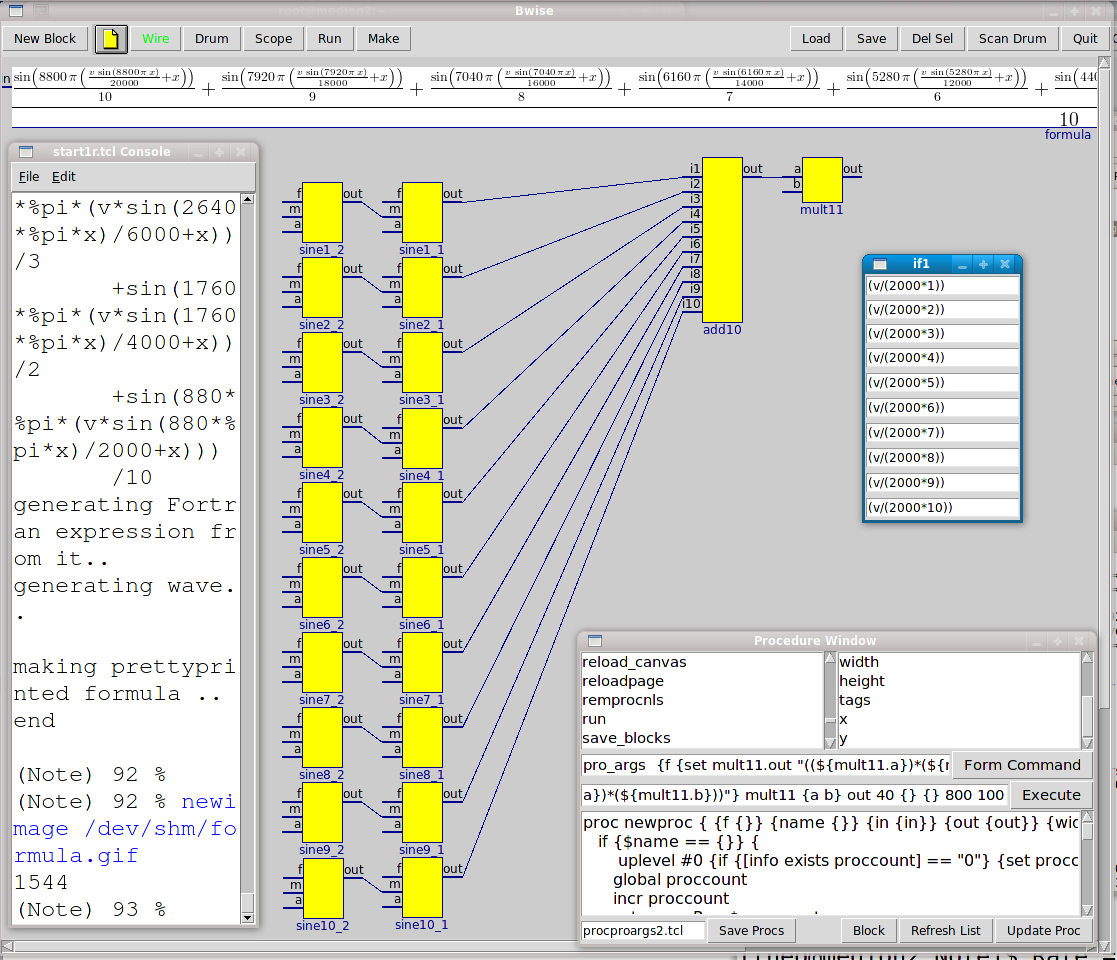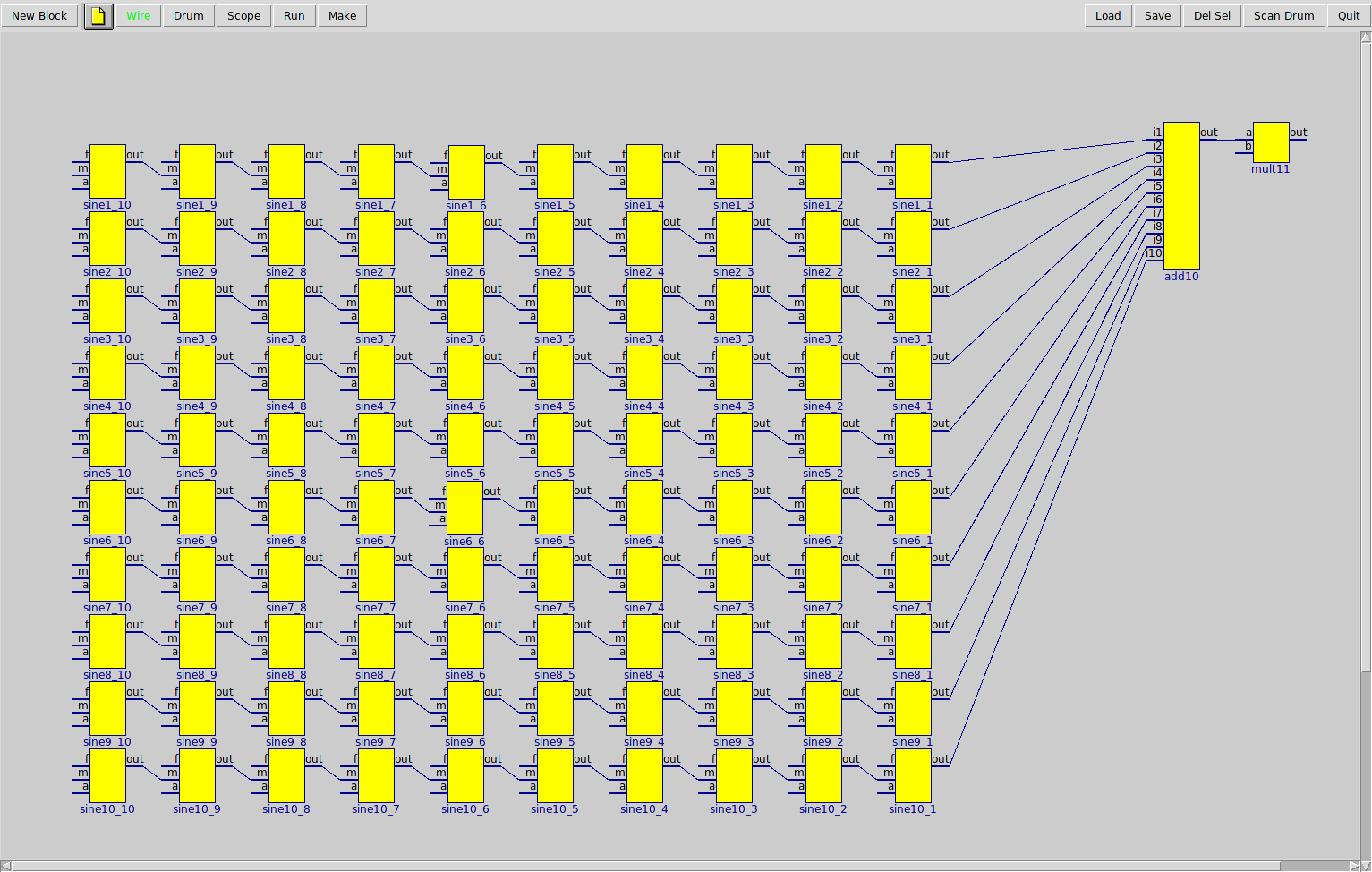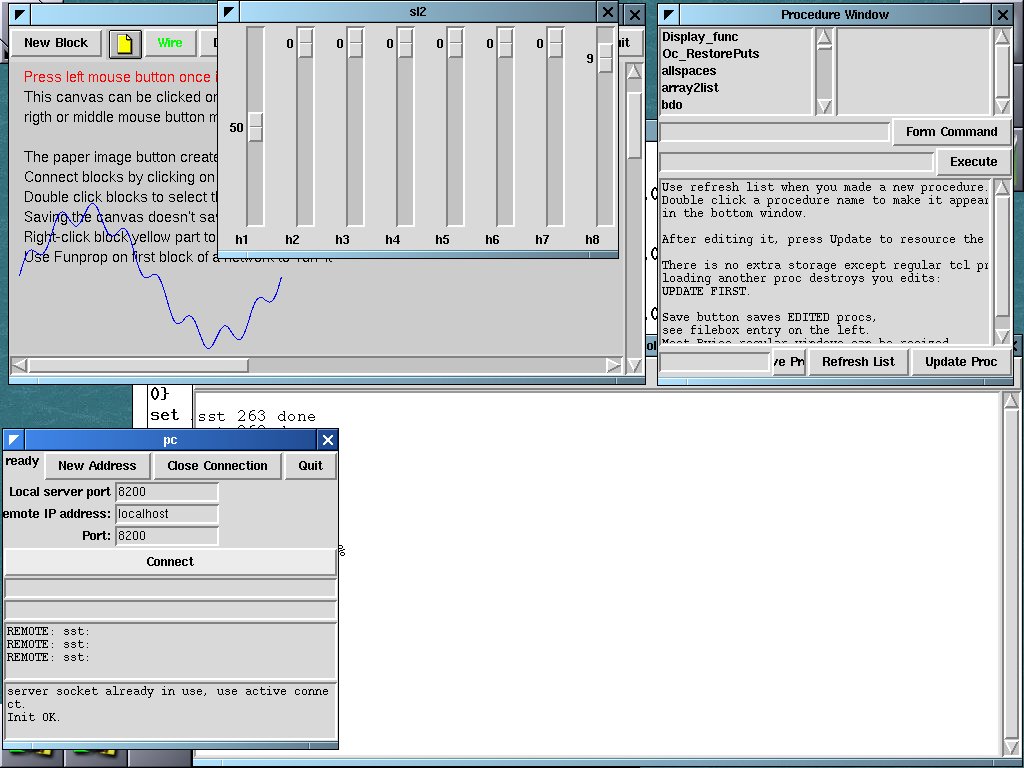theover Linux Audio activities
A not overly long page on some recent things I did wit Linux audio,
meaning programs I run on Linux which produce, process or render audio,
I being Theo Verelst.
I used Fedora 12/64bit on a Pentium D930/3GHz (1GB, Nvidia GF9500/512M
prop. driver, TOS audio output to Lexicon converter, Cuda) for most of
the subjects on this page.
I use quite an extensive self built
audio setup at the moment see for isntance this page about my
buiding acitivities of some time ago. My main amplification system,
also suitable for quite high quality small PA work was demonstrated at
the Audio Engineering Society end-of-year meeting, where I used a HD
notebook running Fedora 8 (and XP pro) and a Lexicon 24 bit studio
converter to demonstrate
it:

Recent LinuxSampler + impulse convolutions + effects experiments
Like in the traditional studio history of the greater names, I've been
interested in interesting signal paths to make instruments sound
interesting or in certain ways in a mix, and so I made some traditional
effects (LADSPAs using jack-rack) work on Linuxsampler and mixed the
samped sounds with analog synthesizer simulation (from Zynsubaddfx),
added impulse responses (using jconvolver) for cabinet and
reverberation space, a mastering multiband compressor/1024 band
equalizer effect based on FFT (Jamin), and special tricks for acoustics
and P.A. simulation and mix preparation, see below.
Mind you the guitar sounds here are ALL sampled, played by a Yamaha S90
synthesizer acting as Usb Midi board only (which works good on all
fedora systems I use) and I use ONLY Linux based synthesizer and effect
sounds for these demos not anything else!

wasbbaswbasssetupflange1.flac
A internet found big ( half a gig!) bass guitar sample played with
effets and a cabinet impulse.

telecasbasssetupsynthflange2.flac
similar setup but a guitar sample (undistorted sample), and I added a
synt simulation, and Jamin multicompression/equlisation

fsjagubasssetupsynthflange4.flac
similar

brassbasssetupsynthflange5b.flac
more exiting: a feed-around with jamin around the convolver. This can
give very interesting and elaborate sounds, I've tried it before, but
this is using a cabinet smulation, which gives sort of a spoiled
acoustic feedback sound.

mandopad2impjam1.mp3
here, two convolutions are used on a mandolin sample + synth pad sound,
one cabinet and a reverb based on a Lexicon impulse measurement (not
mine), where both are fed in a feedback loop with jamin, which gives
P.A. type of space sounds.

mandokotopadcabijam690_6c.flac
Similar, two sampled instruments.
A scientifically oriented advanced sound application: rendering
sound from mathematical formulas
The most fundamental way of creating artifical sound has got to be
generating it, or in this case samples of it, by strict mathematical formulas.
In my combined Maxima / BWise / Tcl / Fortran / C application I start
with a mathematical formula defined in the mathematical algebraic
manipulation package Maxima (based on Lisp) of which a version with a
nice interface on Linux (and windows, but linux runs nicer) is wxMaxima.
For instance a sine wave of full volume and 440 Herz frequency would be
defined as
1*sin(440*2*%pi*t)
where %pi stands for PI. Maxima can use such type of algebraic
formulation in very complex forms and can fairly efficiently perform
all kinds of transformations on such formulas from brace replacing to
formal derivatives. My approach lets Maxima make a Fortran version of
the wave (it can't create a C version..) which I link with a C program
which runs over some amount of time to create a number of samples from
the formula, for instance a number of seconds CD quality (mono).
BWise is my block (network) editor program which for this application
can build Maxima (or other types) formulas by connecting blocks
together in the desired structure, for instance an addition block with
some sine blocks for additive synthesis.
Tcl can automatically get the BWise generated formula to maxima (using
the Run and Make buttons below), and creats the desired C program and even run it
as a jack-output , alsa midi input polyphonic sound module with sounds
exactly made according to the formulas (even in 64 bits real time
accuracy).

The above is an addition terms
like appear often in EE computations about circuits, an exponent
multiplied with a sine wave. Remember: the whole graph was
automatically generated, but can be fully modified: all block functions
can be edited graphically, and all connections too.
The approach can make quite complicated oscillators:

This is a 100 operator FM sound, which plays only a few notes at a time
in realtime, but it works great, and can be completely modified, at any
accuracy, even more 64 bits because of the "infinite" accuracy numbers
of maxima.
The approach, minus the real-time Midi sound app and BWise, is also
available from my web server
(running Fedora 8/64), using a secure tcl script which includes
interaction time compilation, latex processing, etc.
For EEs needless to say: I wil also use the differential equaltion
solver of Maxima, and the possibilities to compute in the Fourier
domain. In fact, this approach allows complex symbolic matrix
solutions, too which is great for circuit simulations.
Most of this can be used on other OSes too, without changing the
designs!
Others
An existing Linux audio application I made in france years ago
mentioned on the Linux audio page: additive synthesis with
tcl/tk and C.

Of course I use
Rosegarden and occasionally Ardour for recording and mixing, too.

I'm also developing a Linux-powered analog audio mixer with ethernet
control from a tcl/tk program (with silders), where a high quality
analog volume chip can be set to a certain volume using a fpga
connected to a ACME Linux board with (Linux compiled) Linux on it, and
Tcl, talking to ethernet parties and driving the FPGA and to set
volumes in the connected chips, which have been tested to act as audio
mixer of much higher quality than most analog 'normal' mixers or
digital ones (which always need to convert analog signals twice).

Another audio related Linux activity I recently took up: 22 hours of
High Definition Video put on a 300Gig disc partition per fragment as I
recorded it with the Sony HC3 HD cam, using dvgrab version 3, and using
ffmpeg to render pictures per minute or at the beginning of each
fragment, automatically, using a tcl/tl script. So now I can pick
fragments for movie parts I'm preparing. Using Mplayer (cvs version)
with VDPAU (NVIdia) these 1920x1080 recordings look great on a 1080+
screen, and Cinelerra (precompiled 4.2 works on Fedora 12 it seems) I
used for effects and editing and aligning audio tracks before (see as
example: youtube theover2 "tipatina").
See also my wiki for some
sound pages.
A fortune ?










